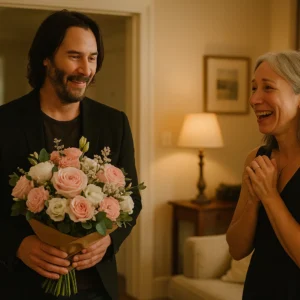In the thin, razor-edged air of the Himalayas, where the world below shrinks to a distant dream and every breath is a borrowed mercy, the “Death Zone” of Mount Everest claims more than lives—it devours dreams, one frozen footstep at a time. At 8,000 meters above sea level, oxygen levels plummet to a third of sea level’s bounty, turning the human body into a battlefield of betrayal: lungs labor like bellows in a forge, brains fog with hypoxia’s insidious haze, and the mind teeters on the brink of hallucination, whispering illusions of summits just beyond the next crevasse. It’s a realm where climbers, stripped to their primal instincts, confront not just the mountain’s indifference but their own fragility. Into this unforgiving abyss stepped Bianca Adler, a 17-year-old Australian prodigy whose audacious bid to conquer Everest in the spring of 2025 became a harrowing testament to ambition’s double edge. At 8,450 meters—mere 350 vertical meters shy of the roof of the world—Bianca, battered by four relentless days in the Death Zone, found herself ensnared in a storm of physical torment and psychological warfare. Hallucinations clawed at her vision, frostbite gnawed at her extremities, and the siren call of the summit warred with the survival imperative screaming retreat. In a moment that would etch her name into mountaineering lore, she radioed her father at base camp, her voice a fragile thread over the gale: “I can’t go on.” The decision to turn back wasn’t defeat—it was defiance, a heartbreaking pivot from glory to survival that saved her life but left an indelible scar on her soul. “One summit isn’t worth losing everything,” Bianca reflects now, her words a quiet thunder from the safety of a Melbourne café, her fingers—still tingling from the cold—tracing the rim of a teacup. “But God, it hurt to let go.”
Bianca’s odyssey to Everest’s edge was no impulsive teenage whim; it was the culmination of a childhood forged in granite and grit, a passion ignited not by rote training montages but by the unyielding pull of the peaks. Born in 2008 in Melbourne to a family of educators—her father, Dr. Elias Adler, a high school physics teacher with a penchant for stargazing hikes, and her mother, Sofia, a librarian whose bedtime stories swapped princesses for Sherpas—Bianca discovered her alpine affinity at age 8 during a family trek in New Zealand’s Fiordland. What started as a plodding pony ride through Milford Track blossomed into obsession: by 10, she was devouring Jon Krakauer’s Into Thin Air, her bedroom walls plastered with topographic maps and summit selfies from virtual climbs on Google Earth. “The mountains don’t care about your age or your excuses,” she’d quote from a dog-eared copy of Ed Viesturs’ No Shortcuts to the Top, her eyes alight with a fire that both thrilled and terrified her parents. Elias, ever the cautious academic, enrolled her in junior climbing clubs at Melbourne’s Bogong Peak, where Bianca’s wiry 5-foot-4 frame and unquenchable curiosity quickly outpaced her peers. At 12, she summited New Zealand’s Mount Cook, the youngest Australian to do so, her small hands gripping crampons like lifelines as she crested the 3,724-meter giant under a canopy of Southern Cross stars. “It wasn’t about being first,” she says, a faint smile creasing her freckled face. “It was about feeling infinite—like the world made sense up there, raw and real.”
By 14, Bianca had shattered records: the youngest woman to scale Manaslu, the eighth-highest peak at 8,163 meters, in Nepal’s Mansiri Himal—a grueling 44-day odyssey through avalanches and altitude that tested her mettle and her mother’s nerves. Ama Dablam, the “Mother Goddess of the Himalayas” at 6,812 meters, fell next, her ascent documented in a viral TikTok series that amassed 2.5 million views, blending GoPro footage of icefalls with candid confessions: “Day 17: Legs like lead, but heart’s on fire. Who’s with me?” Sponsors trickled in—Patagonia for her down suits, Black Diamond for her ice axes—funding a trajectory that positioned Everest as the crown jewel. At 16, she became the youngest Australian to summit Cho Oyu, the sixth-highest at 8,188 meters, her live stream from the “Yellow Band” drawing 500,000 live viewers who watched her battle wind-whipped prayer flags and oxygen-starved sobs. “Bianca’s not climbing mountains,” her coach, veteran Nepali guide Tenzing Sherpa, told a climbing podcast post-descent. “She’s rewriting what’s possible for girls like her—proving the peaks don’t discriminate, but preparation does.” Elias, ever the anchor, joined her on acclimatization treks, his physics lessons on barometric pressure doubling as bedtime pep talks: “The air thins, but your will thickens, kiddo.” Sofia, the worrier, knitted woolen balaclavas embroidered with “Adler Strong,” her packages arriving at base camps like talismans from home.
Everest’s siren call beckoned in early 2025, a $65,000 expedition with Furtenbach Adventures, the Austrian outfitter renowned for its “fast and light” philosophy that shuns fixed ropes for self-reliant speed. Bianca’s team—eight climbers, four Sherpas, and a medic—flew into Lukla’s treacherous airstrip on April 5, the twin-otaku de Havilland DHC-6 rattling over the Dudh Koshi gorge like a tin can in a gale. The 12-day trek to base camp at 5,364 meters was a symphony of small victories: prayer wheels spinning in Namche Bazaar, yaks laden with oxygen canisters trudging through rhododendron blooms, Bianca’s TikToks capturing the Khumbu Icefall’s seracs like frozen cathedrals. “Day 3: Legs screaming, but views eternal. Everest, you waiting for me?” her post garnered 1.2 million likes, followers swelling to 1.8 million as she chronicled crampon clicks and crevasse dodges. Acclimatization rotations followed—up to Camp 2 at 6,400 meters, down to recover, the “climb high, sleep low” mantra her mantra. By May 15, after a storm-delayed window, the push began: fixed lines to Camp 3 at 7,200 meters, where winds howled like banshees and the Geneva Spur’s granite teeth bit into gloves. Bianca, her 110-pound frame fueled by freeze-dried ramen and sheer stubbornness, reached the South Col at 7,950 meters on May 18, the “stepping stone to the stars” where Hillary and Tenzing first glimpsed glory in 1953.
The Death Zone’s grip tightened like a vice on May 19, the ascent to the Hillary Step a vertical gauntlet of ice cliffs and fixed ropes slick with rime. At 8,000 meters, oxygen masks hissed supplemental air—4 liters per minute, a lifeline thinner than Everest’s mercy—yet Bianca’s body rebelled. Hypoxia, the silent thief, crept in: headaches pounding like war drums, nausea twisting her gut into knots, fingers numb despite double mittens. “It’s like your brain’s wrapped in cotton,” she later described in a recovery-room ramble, her voice hoarse from the dry air. “You know you’re dying slow, but it feels like floating.” By 8,200 meters, the hallucinations began—ethereal wisps at first, her late grandmother’s voice murmuring “Turn back, love,” then vivid phantoms: phantom summits shimmering just ahead, shadows of climbers long dead beckoning from the snow. Frostbite clawed at her toes, a burning itch that promised amputation if ignored; high-altitude cerebral edema (HACE) fogged her judgment, turning the Balcony ridge’s knife-edge into a hallucinatory tightrope. “I saw Dad waving from base camp, but it was a cloud,” she recounts, shuddering at the memory. “My legs wanted to keep going—summit fever’s real, that drugged pull—but my gut screamed stop.” At 8,450 meters, 350 meters from the top—close enough to taste the prayer flags—the storm broke: 60-mph gales whipping spindrift into blinding sheets, visibility dropping to zero, her oxygen gauge dipping critically low.
The decision crystallized in a frozen instant, radio crackling to Elias at Camp 4: “Dad… I can’t. It’s too much.” His reply, choked with paternal pride and terror, cut through the static: “Bianca, life over landmark. Come home.” Turning back— the “summit divorce,” as climbers call it—was a gut-wrench—her team, roped in tandem, exchanging nods of shared sorrow as they rappelled the Hillary Step, the summit mocking from above like a mirage. Descent was its own inferno: snow blindness blurring the route, her Sherpa guide Pasang Lama anchoring her through the Yellow Band’s limestone slabs, every step a gamble against avalanche rumble. At Camp 4, collapse: IV fluids flushing the edema, her body a quivering wreck, toes blackened but salvageable after hyperbaric treatment in Kathmandu. “I wept for hours—not for the summit, but for the girl who almost lost herself to it,” she admits, her eyes distant. The toll? Three weeks in a Pokhara hospital for HAPE recovery, therapy sessions unpacking the psychological scar, a ban from high-altitude climbs until 18 per Nepali regulations.
Bianca’s saga, chronicled in real-time via TikTok—clips of her gasping “Death Zone Day 4: Hallucinating home” amassing 55 million views—ignited global discourse on youth in the extremes. Mountaineering’s old guard clashed: Reinhold Messner, the first solo Everest summiteer, decried it as “reckless spectacle,” while younger icons like Alex Honnold praised her “wise warrior turn.” The International Climbing and Mountaineering Federation (UIAA) cited her in a 2025 youth safety whitepaper, advocating stricter age thresholds amid a 20% spike in teen expeditions. Bianca, back in Melbourne’s Yarra Valley for recovery hikes, channels the fire forward: a podcast, Peak Perspectives, launching January 2026, interviewing survivors of summit surrenders; a scholarship fund for girls in Nepali climbing schools, seeded with $150,000 from sponsors. “Everest taught me the mountain wins when you force it,” she says, lacing her boots for a Bogong day trip. “But choosing down? That’s the real ascent.”
As November’s chill grips the Himalayas—monsoon scars fading into winter white—Bianca Adler stands not at the top, but transformed: a survivor whose heartbreaking pivot from pinnacle to preservation redefines victory. The Death Zone, that merciless meridian, claimed no victim this time; instead, it forged a legend in letting go. From Melbourne’s flatlands to Everest’s eternal ice, her story whispers a truth as old as the peaks: true summits lie not in stone, but in the strength to turn back.






